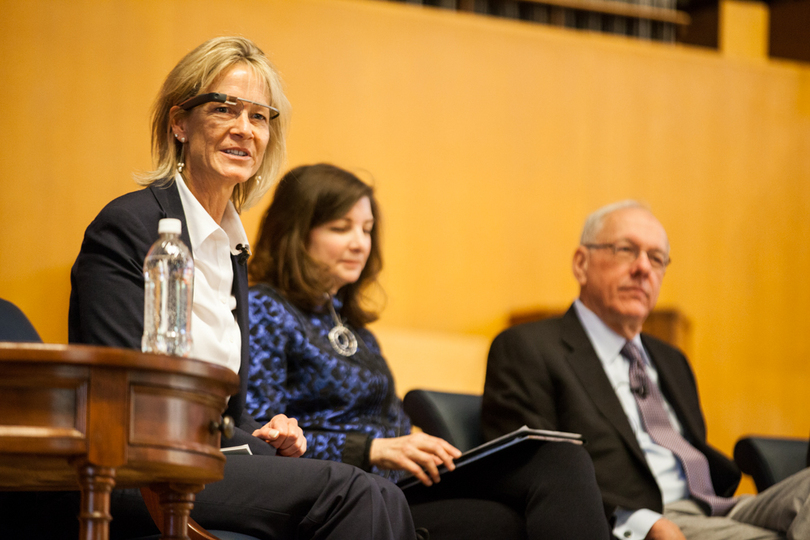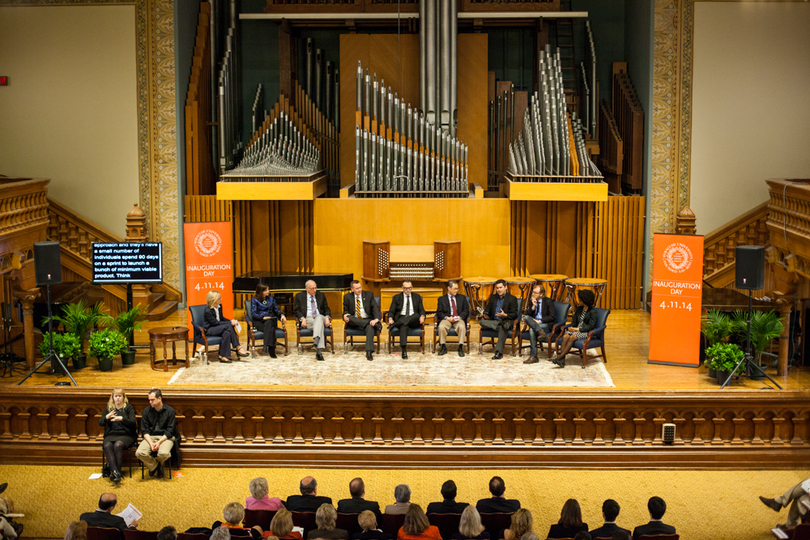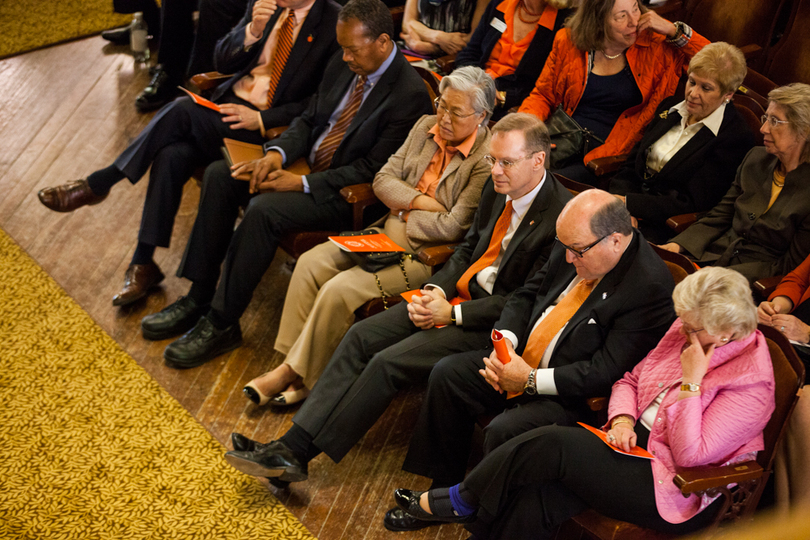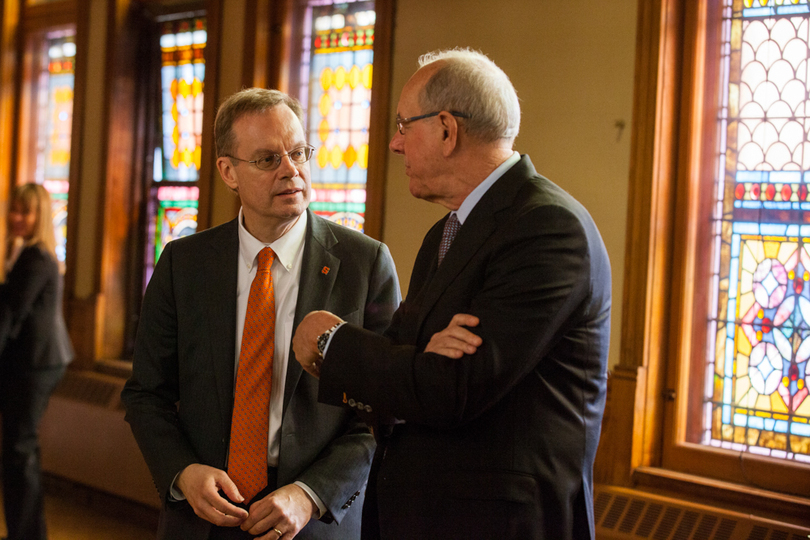Academic symposium brings faculty together to discuss future of great universities
UPDATED: April 13, 1 a.m.
Friday marked the official inauguration of Syracuse University’s newest chancellor, Kent Syverud. But as the university moves into a new era, a symposium was held to discuss where it will be heading next.
By about 10 a.m., Syverud swapped his running shoes and gym shorts from his run across campus that morning for a suit and orange tie to attend “Great Universities in the Next 25 Years,” an academic symposium held in Setnor Auditorium. The symposium was one of four other events held that day to celebrate Syverud’s appointment as SU’s 12th chancellor.
The symposium, moderated by Ann Clarke, dean of the College of Visual and Performing Arts, featured eight panelists:
- Jim Boeheim, SU men’s basketball head coach
- Cathryn Newton, dean emerita of the College of Arts and Sciences
- Shiu-Kai Chin, professor of electrical engineering and computer science
- Dan Pacheco, Peter A. Horvitz Endowed Chair in Journalism Innovation
- Marcelle Haddix, director of English Education Programs in the School of Education
- George Saunders, professor of English
- J. Michael Haynie, executive director of the Institute for Veterans and Military Families
- Michael Speaks, dean of the School of Architecture
Clarke posed questions to each of the panelists with topics focusing on the individual’s area of expertise. Much of the conversation centered on how higher education will change in the future, such as how the design of college campuses may change.
“I have no idea,” Speaks said, bringing laughter from the audience. “But I think it’s a good thing that I don’t know.”
Speaks said the idea of having a set “master plan” has changed, adding that it’s more exciting to have a planning process driven and shaped by what is happening in the university community. However, he said he believes sustainability and smart campuses will become increasingly important in the future.
Panelists also spoke about the relationship between research and technology in future institutions. Pacheco said he uses technology in many of his classes, and believed that embracing the tools it provides can enhance education.
“Technology can bring people from different disciplines together,” he said. “An environment like this is really an incubator for what the world can look like.”
Aside from the discussion of research, other topics of discussion included diversity on college campuses moving forward and the value of higher education.
An audience member brought up the issue of the increasing cost of college and how the business model for universities might change.
“When I went to Columbia it cost $235 a semester,” the audience member told the panel. “A candy bar cost 55 cents.”
Saunders acknowledged that there’s a “student loan crisis,” while Newton said the great universities are restructuring their budget models to put an emphasis on the subjects they view as a priority.
Discussion on the future of research continued as Hub Brown, a broadcast and digital journalism professor, pointed out that people are openly questioning research and its value. He asked the panel how the university can communicate to the public the significance of research and higher education.
“There’s a tendency to say ‘here’s why it’s good for you,’ but we have to be careful not to fall into the trap of saying research is good because it pays off,” Saunders said. “There’s abstract value too.”
Newton agreed, saying the public is hungry for what universities have to offer, it just needs to be offered in an original way.
Clarke asked Boeheim how he foresees athletics and academics integrating in the future.
“I’m sure I’m the least academically qualified of the people up here,” he joked.
Boeheim went on to say he believes there’s a myth that college athletes come to college only to play in the NBA and not to get an education. That myth needs to be dispelled, he said.
Andrew Farrell, a freshmen mechanical engineering major, said he attended because he was interested to hear discussion on what the university might look like in the future — especially in the realm of technology.
Barbara Tagg, director of the Women’s Choir at SU, said she thought the diversity of the panelists was extraordinary, and was pleased that the symposium was included on the slate of inauguration day events.
“I was inspired by the chancellor that he included this component that really challenged us to think about the university’s future in a broad way,” Tagg said.
In addition to the panelists, the nearly-full auditorium saw attendees including Syverud’s wife, Ruth Chen, Chairman of the SU Board of Trustees Richard Thompson, dean of the S.I. Newhouse School of Public Communications Lorraine Branham, Vice Chancellor and Provost Eric Spina and many other members of the SU community.
Published on April 11, 2014 at 4:05 pm
Contact Brett: blsamuel@syr.edu | @Brett_Samuels27










